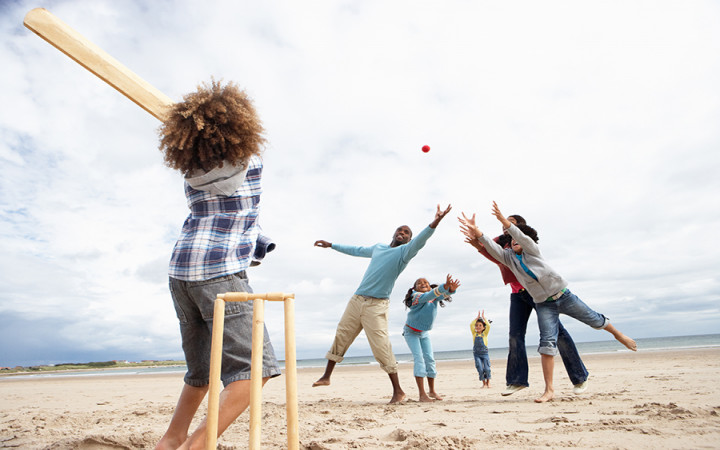Today’s Wonder of the Day was inspired by brar. brar Wonders, “How do swing the ball in cricket” Thanks for WONDERing with us, brar!
Do you look forward to recess every day? After a morning full of studying, it's nice to be able to go outside and stretch your legs for a bit. Some kids head straight for the swings or the teeter-totter, while others grab a ball and play four square.
Other kids might form teams to play a sport, such as volleyball, basketball, football, or soccer. If you live in India, there's a good chance you might join your friends in a challenging game of cricket.
Have you ever played cricket or seen a game played on television? While many Americans know all about football, baseball, and basketball, not many know much about the sport of cricket. After soccer, though, it's one of the most popular sports in the world!
Since cricket involves a bat and a ball, you might think it's similar to baseball. However, while cricket and baseball do share a few similarities, cricket has its own unique equipment, field, and rules that make it a bit of a challenge to grasp quickly.
A game of cricket pits two teams of 11 players each against one another. The team that scores the most runs in its innings wins.
The cricket field is a large oval with a 22-yard, rectangular pitch in the middle. Each end of the pitch has a set of wickets, which are composed of three tall, wooden stumps and two wooden bails that sit atop the three stumps.
Like baseball, one team bats first while the other team fields. The batting team sends two players to the pitch at a time, and they stand in front of the wickets on opposite sides of the pitch. The fielding team has one player (called the bowler) who throws the ball and one who catches it (called the wicket-keeper), while the remaining nine players play fielding positions all around the oval.
The bowler throws the ball in such a way that it will bounce before it gets to the batter. The bowler's goal is to hit the wicket, in which case the batter is out. The batter tries to hit the ball after it bounces to prevent it from hitting the wicket. Unlike a baseball bat, a cricket bat is long and rectangular with one flat side and one curved side.
If the ball is hit, runs can be scored by the batter and his teammate racing to the opposite wicket. A long hit might allow multiple runs to be scored before the fielding team can retrieve the ball or throw out one of the runners. Hits that make it all the way to the field boundary are awarded four runs (if the ball bounces first) or six runs (if the ball doesn't bounce first).
If a batter thinks he will be thrown out (in the case of a short hit, for example), he doesn't have to run after he hits the ball. He can simply bat again instead. There are also no foul balls. The entire oval around the pitch is fair territory.
Each playing phase in a game of cricket is called an innings (with an 's'). The innings ends after either 10 batters have been eliminated or a predetermined number of overs have been completed. In cricket terms, each delivery of the ball is known as a ball. Six balls equal one over.
Cricket matches can take a variety of forms. Short matches might be played over the course of a few hours with each team having a single innings of 20 or 50 overs. Test or first-class cricket matches can last as long as five days with teams playing two innings each with unlimited overs!





